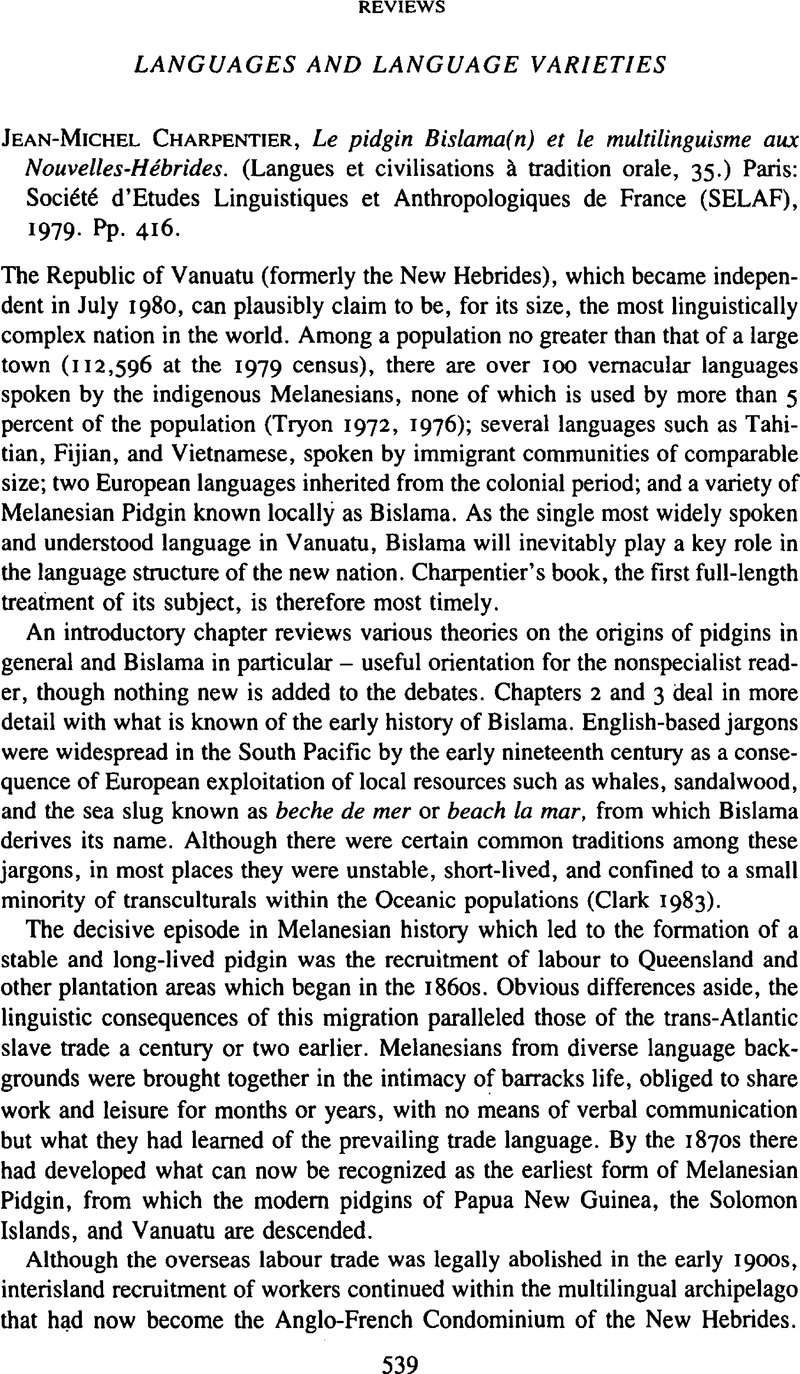No CrossRef data available.
Article contents
Languages and Language Varieties - Jean-Michel Charpentier, Le pidgin Bislama(n) et le multilinguisme aux Nouvelles-Hébrides. (Langues et civilisations à tradition orale, 35.) Paris: Société d'Etudes Linguistiques et Anthropologiques de France (SELAF), 1979. Pp. 416.
Published online by Cambridge University Press: 18 December 2008
Abstract
An abstract is not available for this content so a preview has been provided. Please use the Get access link above for information on how to access this content.

- Type
- Book Review
- Information
- Copyright
- Copyright © Cambridge University Press 1983
References
REFERENCES
Camden, W. G. (1977) A descriptive dictionary: Bislama to English. Vila: Maropa Bookshop.Google Scholar
Clark, R. (1983). Social contexts of early South Pacific pidgins. In Woolford, E. & Washabaugh, W. (eds.), The social context of creolization. Ann Arbor, Mich.: Karoma. 10–27.Google Scholar
Report of the Vanuatu Language Planning Conference (1981). Vila: Pacific Churches Research Centre/U.S.P. Centre U.P.S.Google Scholar
Topping, D. M. (1982). Vanuatu: Land of 112,000 people and 111, languages. Pacific Islands Monthly 53(2):19–21.Google Scholar
Tryon, D. T. (1972). The languages of the New Hebrides: A checklist and general survey. Papers in Linguistics of Melanesia No. 3. (Pacific Linguistics, Series A, No. 35.) Canberra. 43–84.Google Scholar
Tryon, D. T. (1976). New Hebrides languages: An internal classification. (Pacific Linguistics, Series C, No. 50.) Canberra.Google Scholar




